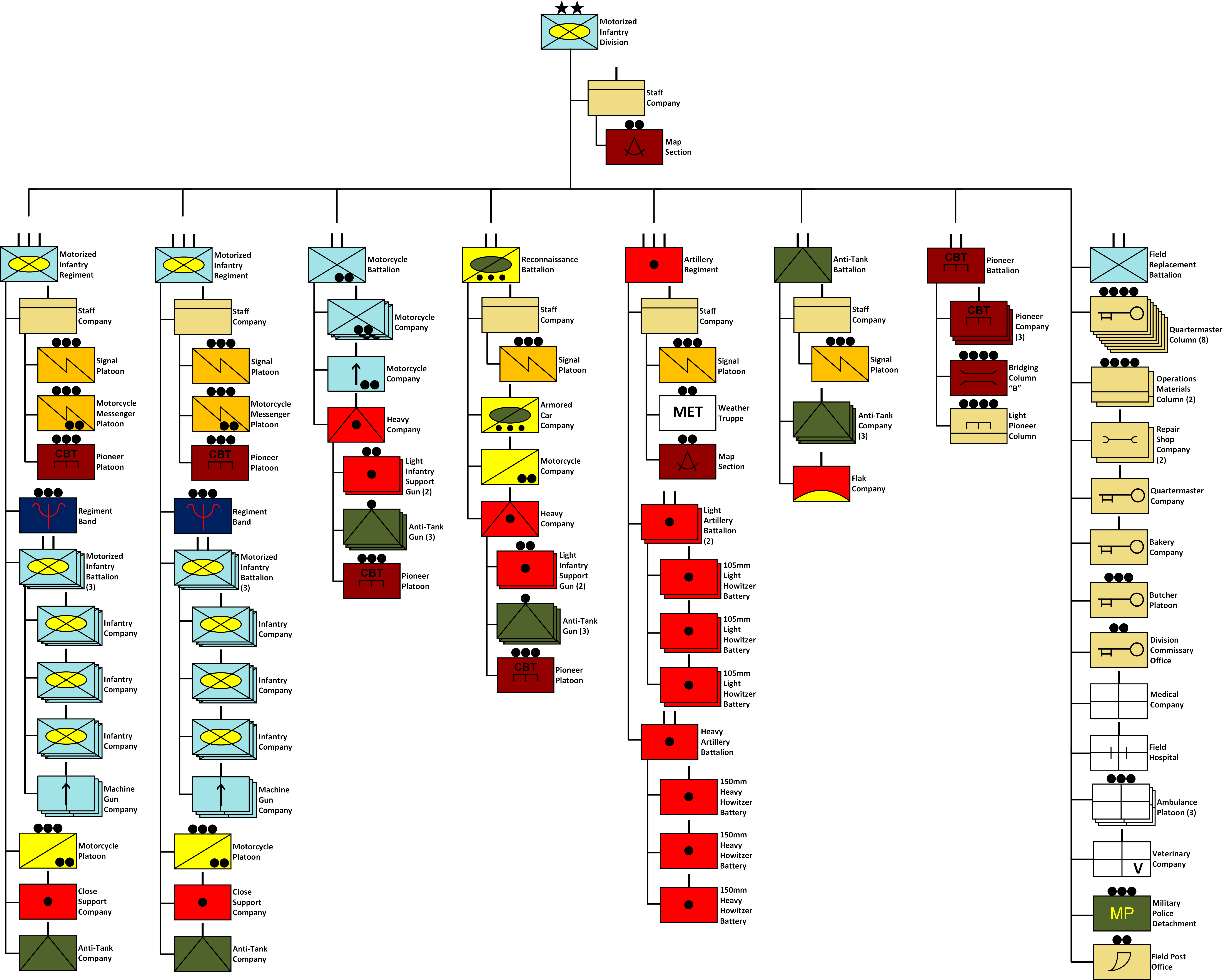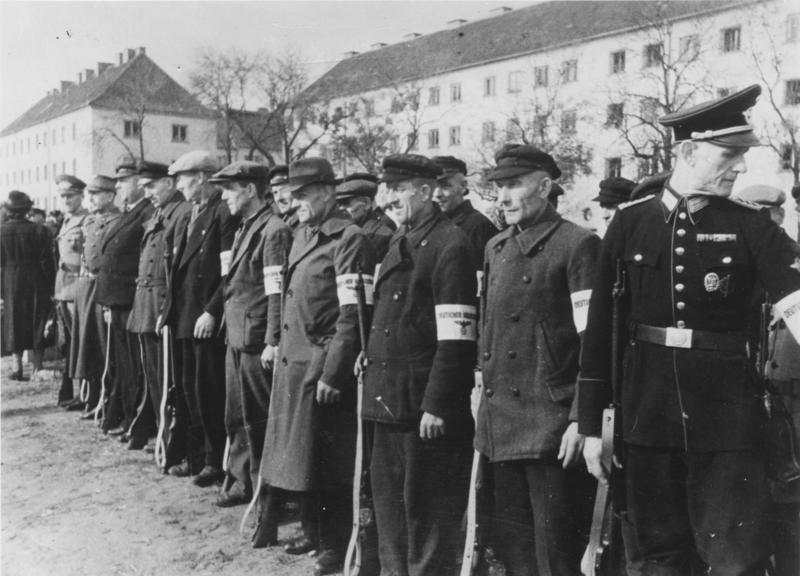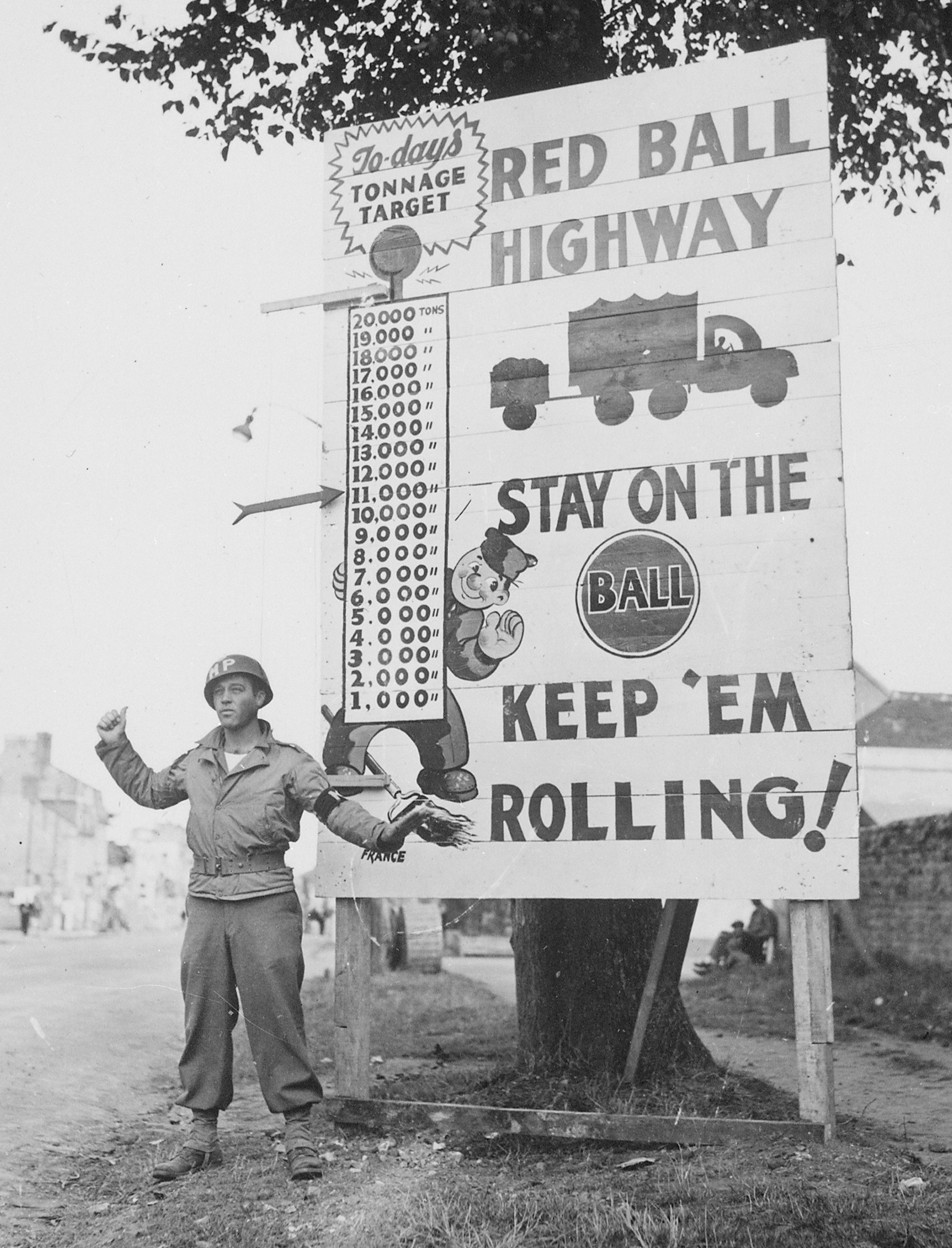|
Volksgrenadier
''Volksgrenadier'' was the name given to a type of German Army division formed in the Autumn of 1944 after the double loss of Army Group Center to the Soviets in Operation Bagration and the Fifth Panzer Army to the Allies in Normandy. The name itself was intended to build morale, appealing at once to nationalism (''Volk'') and Germany's older military traditions (''Grenadier''). Germany formed 78 VGDs during the war. ''Volksgrenadier'' divisions were professional military formations with standardized weapons and equipment, unlike the unrelated '' Volkssturm'' militia. History and organisation The strategic emergency and concomitant manpower shortage resulting from the losses in mid-1944 required the creation of infantry divisions that economized on personnel and emphasized defensive strength over offensive strength. The ''Volksgrenadier'' divisions met this need by using only six line infantry battalions instead of the normal nine for infantry divisions – already a common ... [...More Info...] [...Related Items...] OR: [Wikipedia] [Google] [Baidu] |
List Of German Divisions In World War II
This article lists divisions of the Wehrmacht (German Armed Forces) and Waffen-SS active during World War II, including divisions of the Heer (army), Luftwaffe (air force), and the Kriegsmarine (navy). Upgrades and reorganizations are shown only to identify the variant names for what is notionally a single unit; other upgrades and reorganizations are deferred to the individual articles. Due to the scope of this list, pre-war changes are not shown. Most of these divisions trained in Berlin, which is also where new military technology was kept and tested. German unit designations These designations are normally not translated and used in the German form in the unit name or description. ;''Bodenständige'': A static unit. Normally assigned to units who were deficient in transport and unable to move their own artillery. Many of these were divisions that had been mauled on the Eastern Front and were sent west to serve as coastal defence garrisons until sufficient resources were avai ... [...More Info...] [...Related Items...] OR: [Wikipedia] [Google] [Baidu] |
Battle Of The Bulge
The Battle of the Bulge, also known as the Ardennes Offensive, was the last major German offensive campaign on the Western Front during World War II. The battle lasted from 16 December 1944 to 28 January 1945, towards the end of the war in Europe. It was launched through the densely forested Ardennes region between Belgium and Luxembourg. The primary military objectives were to deny further use of the Belgian port of Antwerp to the Allies and to split the Allied lines, which potentially could have allowed the Germans to encircle and destroy the four Allied forces. Nazi dictator Adolf Hitler, who since December 1941 had assumed direct command of the German army, believed that achieving these objectives would compel the Western Allies to accept a peace treaty in the Axis powers' favor. By this time, it was palpable to virtually the entire German leadership including Hitler himself that they had no realistic hope of repelling the imminent Soviet invasion of Germany unless the ... [...More Info...] [...Related Items...] OR: [Wikipedia] [Google] [Baidu] |
Battle Of Otterlo
The Battle of Otterlo was fought in the Netherlands on 16-17 April 1945. German soldiers were encircled on the De Hoge Veluwe National Park and unexpectedly attacked the already liberated Dutch village Otterlo, leading to fierce fighting in hand-to-hand combat. It resulted in an Allied victory, thanks to the deployment of firethrower tanks, and considerable German losses. Background In April 1945, the western allies liberated large areas in the Netherlands above the river Rhine. In the context of defeating Nazi-Germany, the army movements had their focus to go north as soon as possible; resulting in the liberation of Groningen at 13-16 April 1945. As a flank protection, an area called 'the Veluwe' was liberated from 14 to 18 April 1945 by the use of two military operations: operation Cleanser and operation Cannonshot. As a result, the troops on the Veluwe were encircled in a pocket which was expected to result in a surrender. Otterlo was liberated on 16 April 1945 during ope ... [...More Info...] [...Related Items...] OR: [Wikipedia] [Google] [Baidu] |
Division (military)
A division is a large military unit or formation, usually consisting of between 6,000 and 25,000 soldiers. In most armies, a division is composed of several regiments or brigades; in turn, several divisions typically make up a corps. Historically, the division has been the default combined arms unit capable of independent operations. Smaller combined arms units, such as the American regimental combat team (RCT) during World War II, were used when conditions favored them. In recent times, modern Western militaries have begun adopting the smaller brigade combat team (similar to the RCT) as the default combined arms unit, with the division they belong to being less important. While the focus of this article is on army divisions, in naval usage " division" has a completely different meaning, referring to either an administrative/functional sub-unit of a department (e.g., fire control division of the weapons department) aboard naval and coast guard ships, shore commands, and in ... [...More Info...] [...Related Items...] OR: [Wikipedia] [Google] [Baidu] |
Volkssturm
The (; "people's storm") was a levée en masse national militia established by Nazi Germany during the last months of World War II. It was not set up by the German Army, the ground component of the combined German ''Wehrmacht'' armed forces, but by the Nazi Party on the orders of Adolf Hitler and established on 25 September 1944. It was staffed by conscripting males between the ages of 16 and 60 years, who were not already serving in some military unit. The ''Volkssturm'' comprised one of the final components of the total war promulgated by Propaganda Minister Joseph Goebbels, part of a Nazi endeavor to overcome their enemies' military strength through force of will. ''Volkssturm'' units fought unsuccessful futile battles against the Allied forces at the end of the war and on several occasions, its members participated in atrocities accompanied by German civilians and the Hitler Youth, which were overseen by members of the SS or Gau leaders. Origins and organization The ... [...More Info...] [...Related Items...] OR: [Wikipedia] [Google] [Baidu] |
Battle Of The Scheldt
The Battle of the Scheldt in World War II was a series of military operations led by the First Canadian Army, with Polish and British units attached, to open up the shipping route to Antwerp so that its port could be used to supply the Allies in north-west Europe. Under acting command of the First Canadian's Lieutenant-General Guy Simonds, the battle took place in northern Belgium and southwestern Netherlands from 2 October to 8 November 1944. The Canadians had been delayed, and pressure on the Scheldt left wanting, by Allied decisions to focus on Arnhem (Operation Market Garden), Boulogne ( Operation Wellhit), Calais ( Operation Undergo) and Dunkirk. By the time the Canadians were sent into the Battle of the Scheldt, the Wehrmacht defenders had been reinforced. The Germans staged an effective delaying action, during which they flooded land areas in the Scheldt estuary, slowing the Allied advance. After five weeks of difficult fighting, the Canadian First Army, at a cost ... [...More Info...] [...Related Items...] OR: [Wikipedia] [Google] [Baidu] |
Operation Market Garden
Operation Market Garden was an Allied military operation during the Second World War fought in the Netherlands from 17 to 27 September 1944. Its objective was to create a salient into German territory with a bridgehead over the River Rhine, creating an Allied invasion route into northern Germany. This was to be achieved by two sub-operations: seizing nine bridges with combined U.S. and British airborne forces (Market) followed by land forces swiftly following over the bridges (Garden). The airborne operation was planned and undertaken by the First Allied Airborne Army with the land operation by XXX Corps of the British Second Army.The Battle for the Rhine 1944 by Robin Neillands, Chapter 4 The Road to Arnhem Although the largest airborne operation of the war up to that point, Market Garden's ultimate outcome remains debated: The operation succeeded in liberating the Dutch cities of Eindhoven and Nijmegen along with many towns, and limited V-2 rocket launching sites. How ... [...More Info...] [...Related Items...] OR: [Wikipedia] [Google] [Baidu] |
Sturmgewehr 44
The StG 44 (abbreviation of Sturmgewehr 44, "assault rifle 44") is a German assault rifle developed during World War II by Hugo Schmeisser. It is also known by its early designations as the MP 43 and MP 44 (''Maschinenpistole 43'' and ''44''). The StG 44 was an improvement of an earlier design, the Maschinenkarabiner 42(H). The StG 44 was the first successful assault rifle, with features including an intermediate cartridge, controllable automatic fire, a more compact design than a battle rifle with a higher rate of fire, and being designed primarily for hitting targets within a few hundred metres. Other rifles at the time were designed to hit targets of over a thousand meters, but this was found to be in excess of the range in which most enemy engagements actually took place. The StG 44 fulfilled its role effectively, particularly on the Eastern Front, offering a greatly increased volume of fire compared to standard infantry rifles. The StG largely influenced the Soviet AK-4 ... [...More Info...] [...Related Items...] OR: [Wikipedia] [Google] [Baidu] |
Bundesarchiv Bild 183-1985-0104-501, Ardennenoffensive, Grenadiere In Luxemburg
, type = Archive , seal = , seal_size = , seal_caption = , seal_alt = , logo = Bundesarchiv-Logo.svg , logo_size = , logo_caption = , logo_alt = , image = Bundesarchiv Koblenz.jpg , image_caption = The Federal Archives in Koblenz , image_alt = , formed = , preceding1 = , preceding2 = , dissolved = , superseding1 = , superseding2 = , agency_type = , jurisdiction = , status = Active , headquarters = PotsdamerStraße156075Koblenz , coordinates = , motto = , employees = , budget = million () , chief1_name = Michael Hollmann , chief1_position = President of the Federal Archives , chief2_name = Dr. Andrea Hänger , chief2_position ... [...More Info...] [...Related Items...] OR: [Wikipedia] [Google] [Baidu] |
Luftwaffe
The ''Luftwaffe'' () was the aerial-warfare branch of the German '' Wehrmacht'' before and during World War II. Germany's military air arms during World War I, the '' Luftstreitkräfte'' of the Imperial Army and the '' Marine-Fliegerabteilung'' of the Imperial Navy, had been disbanded in May 1920 in accordance with the terms of the 1919 Treaty of Versailles which banned Germany from having any air force. During the interwar period, German pilots were trained secretly in violation of the treaty at Lipetsk Air Base in the Soviet Union. With the rise of the Nazi Party and the repudiation of the Versailles Treaty, the ''Luftwaffe''s existence was publicly acknowledged on 26 February 1935, just over two weeks before open defiance of the Versailles Treaty through German rearmament and conscription would be announced on 16 March. The Condor Legion, a ''Luftwaffe'' detachment sent to aid Nationalist forces in the Spanish Civil War, provided the force with a valuable testing ... [...More Info...] [...Related Items...] OR: [Wikipedia] [Google] [Baidu] |
Military Units And Formations Of Germany In World War II
A military, also known collectively as armed forces, is a heavily armed, highly organized force primarily intended for warfare. It is typically authorized and maintained by a sovereign state, with its members identifiable by their distinct military uniform. It may consist of one or more military branches such as an army, navy, air force, space force, marines, or coast guard. The main task of the military is usually defined as defence of the state and its interests against external armed threats. In broad usage, the terms ''armed forces'' and ''military'' are often treated as synonymous, although in technical usage a distinction is sometimes made in which a country's armed forces may include both its military and other paramilitary forces. There are various forms of irregular military forces, not belonging to a recognized state; though they share many attributes with regular military forces, they are less often referred to as simply ''military''. A nation's military may ... [...More Info...] [...Related Items...] OR: [Wikipedia] [Google] [Baidu] |
Wehrmacht
The ''Wehrmacht'' (, ) were the unified armed forces of Nazi Germany from 1935 to 1945. It consisted of the ''Heer'' (army), the ''Kriegsmarine'' (navy) and the ''Luftwaffe'' (air force). The designation "''Wehrmacht''" replaced the previously used term and was the manifestation of the Nazi regime's efforts to rearm Germany to a greater extent than the Treaty of Versailles permitted. After the Nazi rise to power in 1933, one of Adolf Hitler's most overt and audacious moves was to establish the ''Wehrmacht'', a modern offensively-capable armed force, fulfilling the Nazi régime's long-term goals of regaining lost territory as well as gaining new territory and dominating its neighbours. This required the reinstatement of conscription and massive investment and defense spending on the arms industry. The ''Wehrmacht'' formed the heart of Germany's politico-military power. In the early part of the Second World War, the ''Wehrmacht'' employed combined arms tactics (close- ... [...More Info...] [...Related Items...] OR: [Wikipedia] [Google] [Baidu] |




